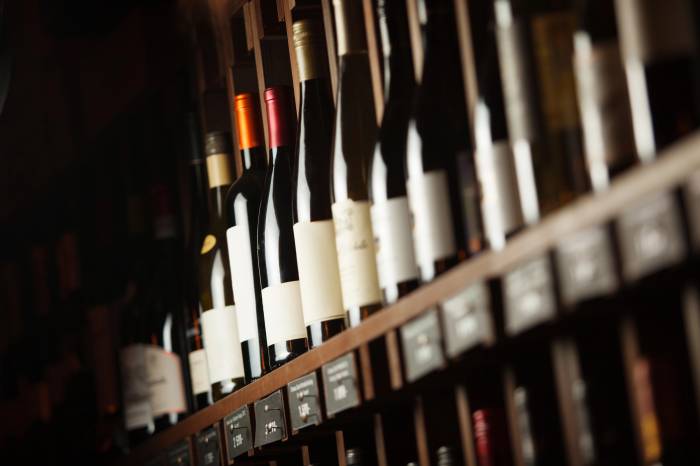
根据全球高品质葡萄酒数据和贸易交易所 Liv-ex 最近举办的网络研讨会,高品质葡萄酒市场在经历了长期低迷之后,正在显示出复苏的早期迹象。索菲亚-吉尔摩(Sophia Gilmour)和亨利-约翰逊(Henry Johnson)主持了题为 "复苏在望?
高品质葡萄酒行业已进入第三年的调整期,这是二十年来最长的调整期。作为市场的重要基准,Liv-ex 100 指数从最高点下跌了 27%,今年迄今为止下跌了 5%。现在的价格已经接近大流行病引发的繁荣之前的水平,这是许多投资者和收藏家的心理阈值。
当前形势的根源可追溯到 2020 年,当时低利率和财富创造的增加推动了对葡萄酒等另类资产的需求激增。事实证明,这种势头是不可持续的。到 2021 年底,利率上升和经济逆风引发了资本撤离,导致葡萄酒价格从 2022 年 3 月开始下跌。
2025 年伊始,市场出现了短暂的乐观。第一季度,活跃参与者和交易量均创下历史新高。然而,3 月份美国对进口葡萄酒征收新关税的威胁使这一积极趋势戛然而止。仅仅是关税的可能性就导致美国买家--他们曾占 2024 年市场总价值的 35%--大幅回撤。这种突然的退出与 2000 年代末亚洲买家的退出如出一辙,并导致了自调整开始以来最大幅度的价格下跌。深受美国需求支撑的香槟 50 指数受到的冲击尤为严重。
另一个打击来自波尔多 2024 年期酒活动。由于生产商不顾经济压力抵制降价,而收藏者在经历了多年的价值下跌后也心存疑虑,因此对该活动恢复信心的希望破灭了。拉菲和木桐等标志性葡萄酒在上市数月后仍未售出,这在十年前是不可想象的。活动的失败进一步削弱了信任,暴露了供应链的紧张。
在通常平静的夏季,葡萄酒价格达到了可以再次吸引买家的水平。值得注意的是,来自香港的私人买家重新开始关注高端勃艮第和加州赤霞珠葡萄酒。利率降低、价格优惠以及亚洲经济前景走强等因素推动了这一兴趣的恢复。催化剂可能是六年来积累的过剩库存消耗殆尽,促使商家在节假日前补货。虽然中国大陆在很大程度上仍未进入市场,但这一活动被视为市场趋稳的重要标志。
市场分析师目前正在关注几个关键指标,以寻找更广泛复苏的证据。衡量买家信心的买价与卖价之比大幅提高。上周,Liv-ex 100 的买入价与卖出价比率达到了 0.7,这是自 2023 年 4 月以来的最高点。虽然Liv-ex 1000的总体比率仍低于预测涨幅的临界值,但已从6月份的0.24上升到9月份的0.39,表明市场情绪正在好转。
交易价格也在向市场价格靠拢,表明买家看到了当前水平的价值,不太愿意要求大幅折扣。例如,2021年份波尔多葡萄酒最初的市场反应不佳,但在过去一个季度中,其平均成交折扣已从-8.5%降至-3.9%。在白马庄 2000 等成熟葡萄酒中,接近市场价格的交易帮助提高了其他卖家的要价。
技术分析显示,大多数 Liv-ex 指数正在接近 2020 年的低点,这是重要的心理和技术支撑位。波动性也有所下降,这表明买卖双方在价值上找到了共同点。然而,波尔多面临着更深层次的结构性问题,其波尔多500指数已跌破2020年的水平,接近2015年的水平。
更广泛的经济背景仍然至关重要。全球财富创造仍在继续,股市屡创新高,财富正在大规模代际转移。然而,这些财富集中在较少的个人手中,限制了总体需求。此外,人口结构也面临着挑战:年轻一代的葡萄酒饮用量正在减少,这通常是出于经济承受能力的考虑。
降低利率被视为持续复苏最重要的潜在催化剂。从历史上看,低利率时期会促进对葡萄酒等另类资产的需求。虽然内部市场指标正在改善,但全面复苏将取决于行业内部信心的恢复和外部经济条件的支持。
行业领导者一致认为,透明度和更好的沟通对于重建信任和吸引新买家至关重要。下一代藏家期待清晰的定价和有关市场挑战的坦诚对话。仅靠声望的传统销售策略已不再有效。
专家们一致认为,虽然不可能出现快速牛市,但最糟糕的调整可能已经过去。预计市场将横盘或稳定一段时间,让新买家以有吸引力的价格进入,并给该行业重建信心的时间。要实现长期增长,生产商、分销商和商家必须适应不断变化的消费价值观,并投资于吸引年轻人群。
高端葡萄酒市场的恢复能力正在经受考验,但早期迹象表明,通过调整和对透明度的重新关注,高端葡萄酒市场在未来几年会变得更强大、更可持续。
Vinetur® 是 VGSC S.L. 公司的注册商标,成立于 2007 年,在葡萄酒行业有着悠久的历史。
VGSC,S.L.(CIF B70255591)是一家在西班牙圣地亚哥-德孔波斯特拉商业注册处注册的实体。
电子邮件:[email protected] | 电话:+34 986 077 611
总部和办事处位于加利西亚的 Vilagarcia de Arousa